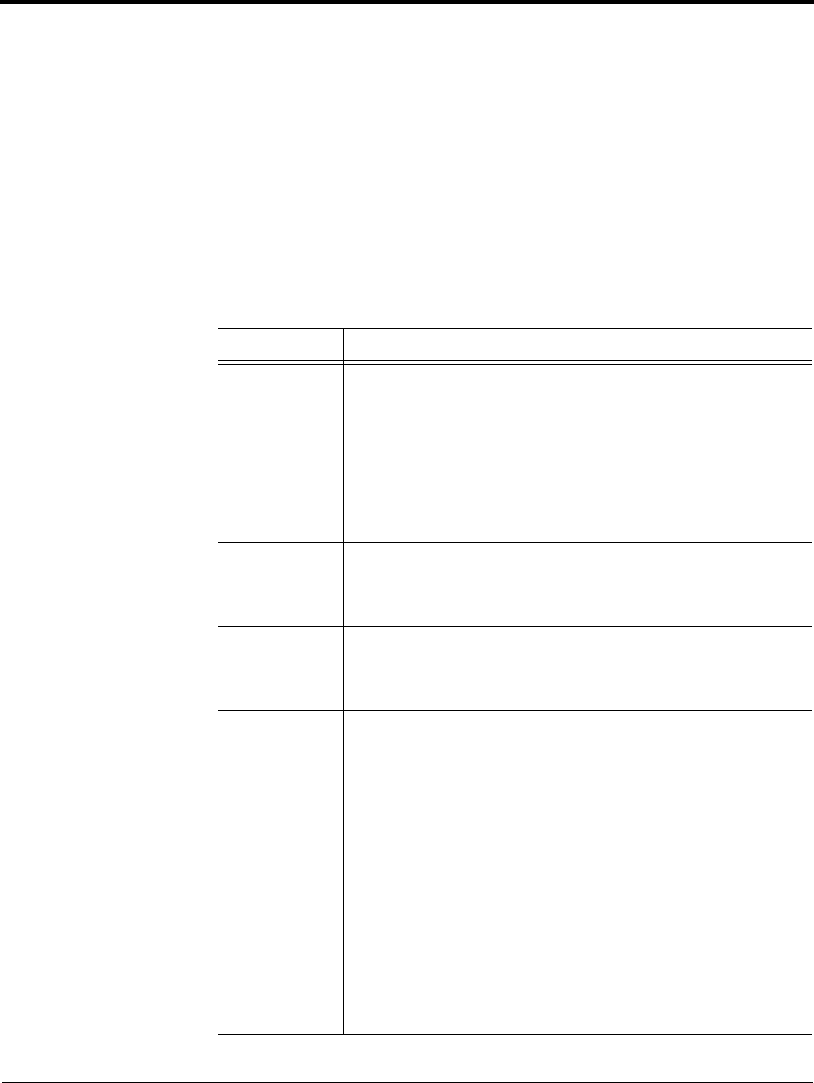
Serial Protocols
C-12 User’s Manual
A protocol is a set of instructions that control the way data is
transmitted between devices such as a processor and printer. The
protocol ensures that the processor does not send information to the
printer faster than the data can be processed. By telling the processor
when it can receive data, the protocol prevents the printer buffer from
overflowing.
This printer offers a choice of four protocols: XON/XOFF, DTR, RC,
and ETX/ACK. The following table gives details. If no particular
protocol is recommended, try DTR.
Table C–1 Serial protocols
Protocol Description
ON/XOFF
(DC1/DC3)
When the printer is ready to receive data, it sends
the XON (DC1) code (hex 11). When fewer than
255 bytes of space remain in the buffer, or when the
printer is switched offline, the printer sends the
XOFF (DC3) code (hex 13). The processor must
stop transmitting data within 255 (63) characters of
receiving XOFF, or information may be lost.
DTR
(hardware)
The DTR signal on interface cable pin 20 controls
the flow of data rather than sending a character
code.
RC Same as DTR except that it uses the Reverse
Channel signal (pin 11) instead of the Data
Terminal Ready signal (pin 20).
ETX/ACK This protocol is a little more complicated, but allows
faster throughput under some conditions. The
processor adds the End of Text ETX character
(hex 03) at the end of each block of print data. The
block, including the ETX character, is usually half
the printer input buffer, but it can be as large as the
input buffer.
The processor must stop transmitting the next block
of data until it receives the ACK character, or
information may be lost. Data transmission
continues until the printer finishes printing two
blocks, providing high-throughput data
communication.
Serial Protocols
DL6400/6600 Book Page 12 Thursday, September 21, 2000 7:52 PM


















